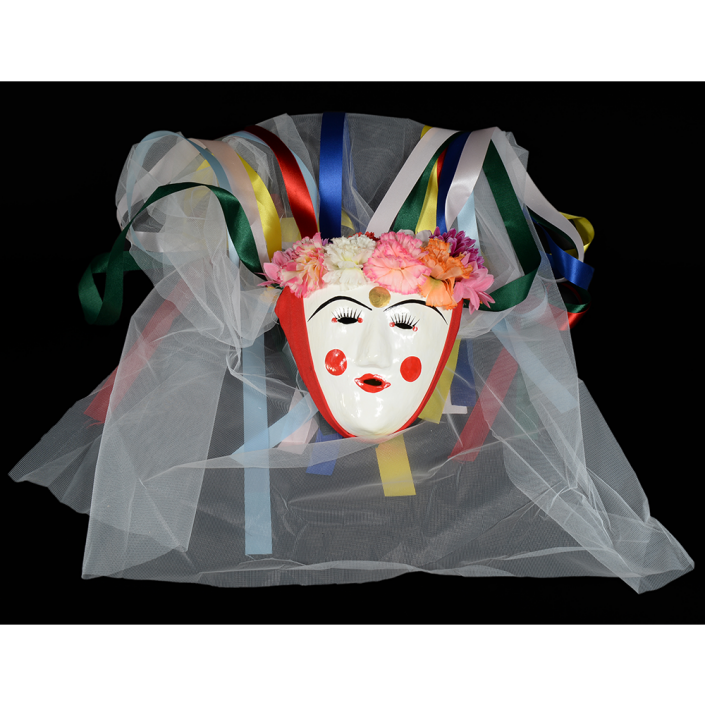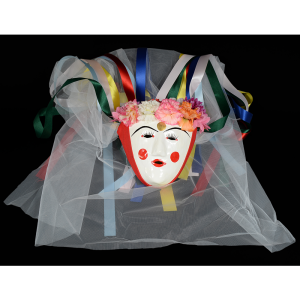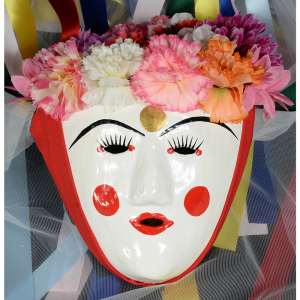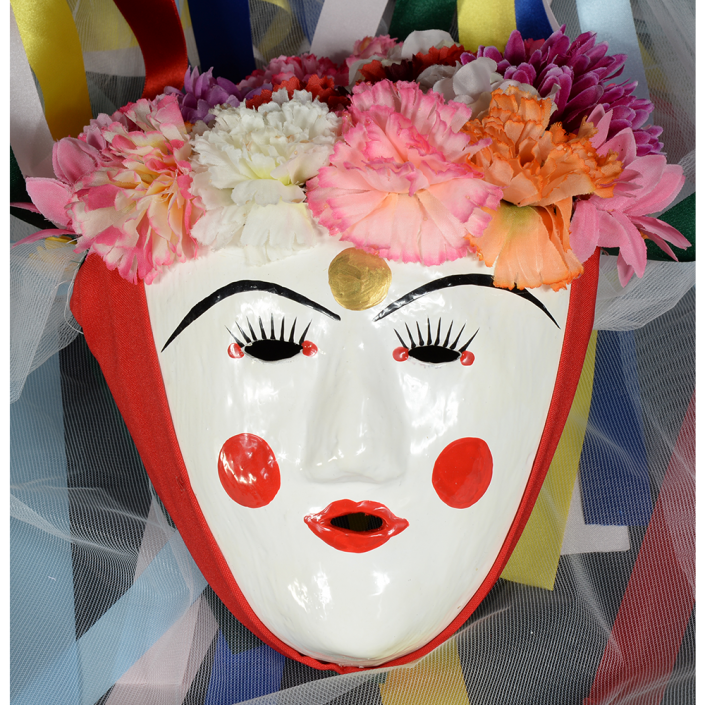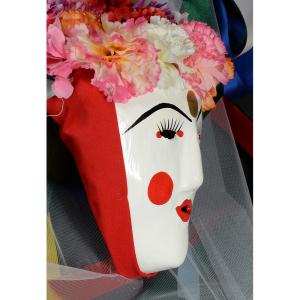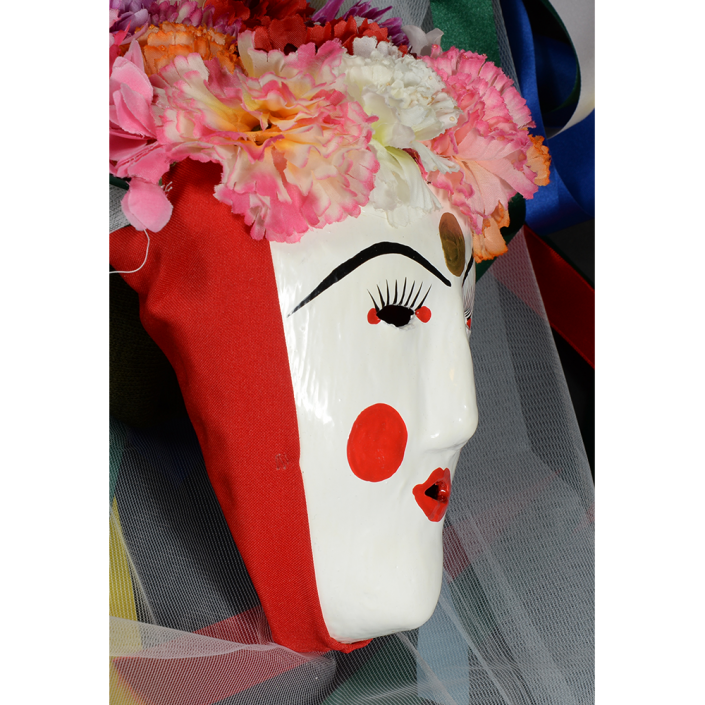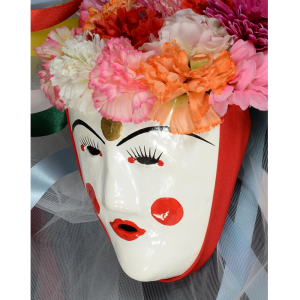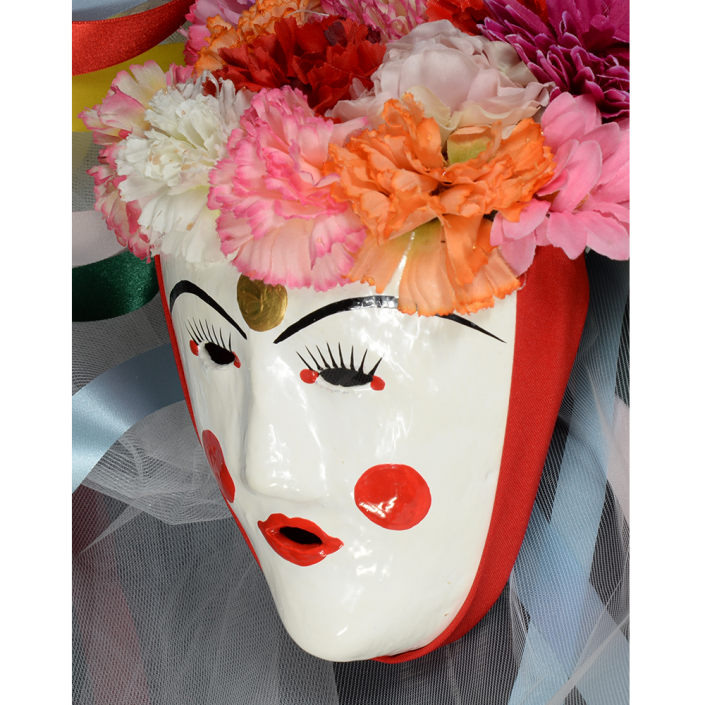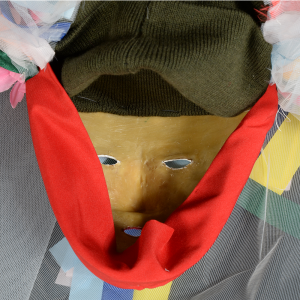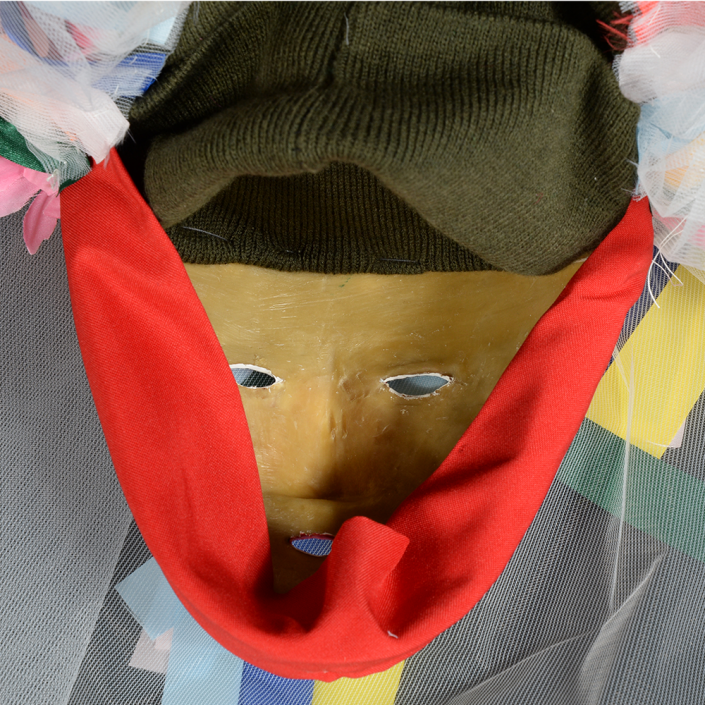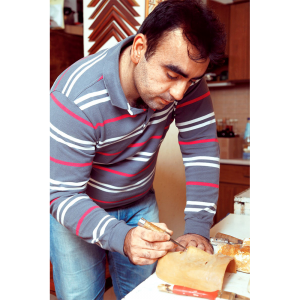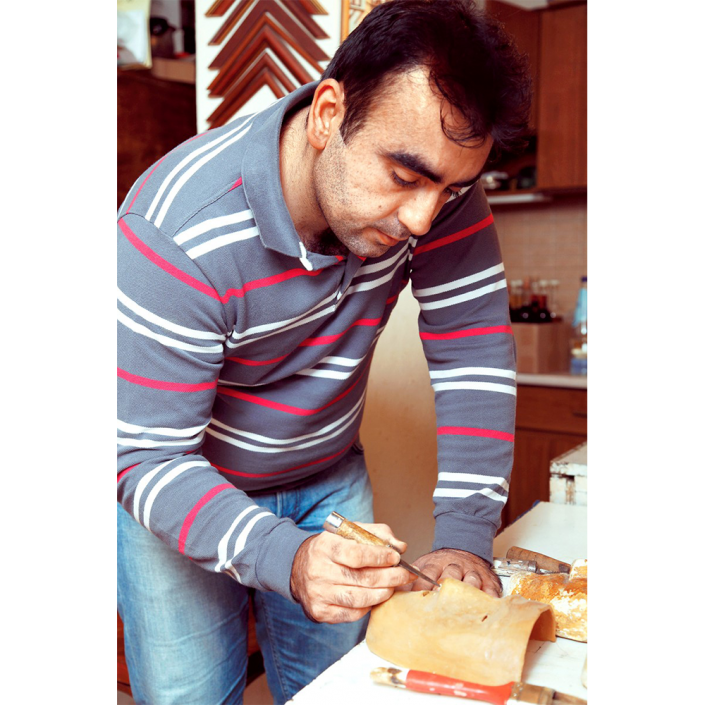TITLE: Boules Bride Mask
TYPE: face mask
GENERAL REGION: Europe
COUNTRY: Greece
SUBREGION: Naoussa, Imathia, Macedonia
ETHNICITY: Hellenic
DESCRIPTION: Bride (Nifi) Mask
CATALOG ID: EUGR001
MAKER: Alexandros Karydas (Naoussa, 1985- )
CEREMONY: Carnival
AGE: 2020
MAIN MATERIAL: beeswax
OTHER MATERIALS: oil-based paint; cotton cloth; polyester cloth and ribbons; synthetic flowers; cotton stitching
The origin of the Boules Festival in the town of Naoussa, in Macedonia, Greece, is obscured by history. It probably has its origins in ancient Dionysian celebrations of fertility during the spring (Anthestiria). The modern festival is held during Carnival, but its origin was the Turkish occupation of Naoussa. The Ottoman Empire controlled much of Greece from 1537 until 1829. According to legend, in 1705, the Turks renounced the principle of peaceful coexistence and Turkish soldiers came to the village of Naoussa to recruit forcibly children for their Christian military unit. Those families that resisted were slaughtered, and resisters hid in the mountains to stage attacks on the Turkish forces. The following year, around Carnival time, the villagers of Naoussa put on masks and costumes, and paraded in tribute to the dead. To deceive the Turks, the ritual was framed as a wedding, but in reality the bride was a masked man, and the wedding feast was really a means to surreptitiously collect money and food for rebels living in the mountains.
Today, the tradition is still rigorously followed, with masked nifi (bride) and boules (council of men), today called yenitsari (“janissaries,” or Christian soldiers fighting for the Turks) performing specific dances. Only unmarried young males are allowed to masquerade as part of the group (boulouki), and all yenitsari wear identical costumes. The bride is also played by a young man. In the case of the bride, she wears an embroidered skirt, and colorful long-sleeved blouse, and a wedding veil. They parade through the town to the traditional music (called Zalistos) of a band playing drum and clarinet (zournas), until they reach the City Hall, and the leader of the boulouki asks permission from the Mayor to begin the ceremony. They then go to the main square, where the dancing begins. After the dances, the boules go to the Alonia region to ceremonially remove their masks.
